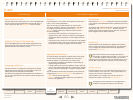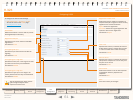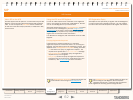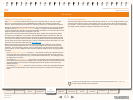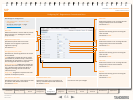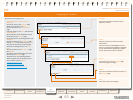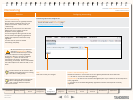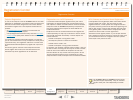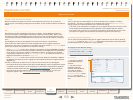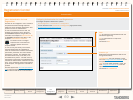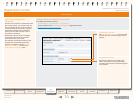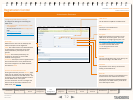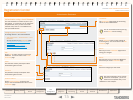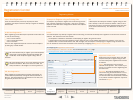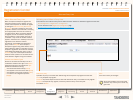
68
D14049.03
MAY 2008
Grey Headline (continued)
TANDBERG VIDEO COMMUNICATIONS SERVER
ADMINISTRATOR GUIDE
Introduction Getting Started
Overview and
Status
System
Conguration
VCS
Conguration
Zones and
Neighbors
Call
Processing
Bandwidth
Control
Firewall
Traversal
Maintenance Appendices
Registration Control
Registration Overview
Finding a VCS with which to Register
Before an endpoint can register with a VCS, it must determine which VCS it can or should be
registering with. This setting is congured on the endpoint, and the process is different for SIP and
H.323.
SIP
SIP endpoints must nd a SIP Registrar with which to register. The SIP Registrar maintains a
record of the endpoint’s details against the endpoint’s Address of Record (AOR). When a call is
received for that AOR, the SIP Registrar refers to the record in order to nd the endpoint to which
it corresponds. (Note that the same AOR can be used by more than one SIP endpoint at the same
time.)
The SIP Registrar will only accept registrations for domains for which it is authoritative.
There are two ways a SIP endpoint can locate a Registrar with which to register: manually or
automatically. The option is congured on the endpoint itself under the SIP Server Discovery option
(consult your endpoint user guide for how to access this setting).
If the
•
Server Discovery mode is set to automatic, the endpoint will send a REGISTER message to
its SIP Server. This will be forwarded (via DNS if necessary) to the Registrar that is authoritative
for the domain with which the endpoint is attempting to register. For example, if an endpoint
is attempting to register with a URI of john.smith@example.com, the request will be sent to the
Registrar authoritative for the domain example.com.
If the
•
Server Discovery mode is set to manual, the user must specify the IP address or FQDN of
the Registrar with which they wish to register, and the endpoint will attempt to register with that
Registrar only.
The VCS is a SIP Server for endpoints in its local zone, and can also act as a SIP Registrar.
If the VCS is acting as the endpoint’s SIP Server and SIP Registrar, when the registration request
•
is received from the endpoint it will be accepted by the VCS and the endpoint will be registered
and able to receive inbound calls. See Using the VCS as a SIP Registrar for more information.
If the VCS is acting as the endpoint’s SIP server but is not a SIP Registrar, it will proxy the
•
registration request. See Proxying registration requests for more information.
H.323
There are two ways an H.323 endpoint can locate a VCS with which to register: manually or
automatically. The option is congured on the endpoint itself under the Gatekeeper Discovery
setting (consult your endpoint manual for how to access this setting).
If the mode is set to automatic, the endpoint will try to register with any VCS it can nd. It does
•
this by sending out a Gatekeeper Discovery Request, to which eligible VCSs will respond.
If the mode is set to manual, you must specify the IP address of the VCS with which you wish
•
your endpoint to register, and the endpoint will attempt to register with that VCS only.
Auto discover
On: The VCS will respond
to Gatekeeper discovery
requests.
Off: The VCS will reject
Gatekeeper discovery
requests. H.323 endpoints
will be able to register
with the VCS only if their
Gatekeeper Discovery setting
is Manual and they have
entered the IP address of the
VCS.
Preventing automatic registrations
You can prevent H.323 endpoints being able to register automatically with the VCS by disabling
Auto Discovery on the VCS. The Auto Discovery setting determines whether the VCS responds to
the Gatekeeper Discovery requests sent out by endpoints.
To congure the Auto Discovery setting:
VCS Conguration > Protocols > H.323
•
.
You will be taken to the H.323 page.
H323 Gatekeeper AutoDiscover
•
y



